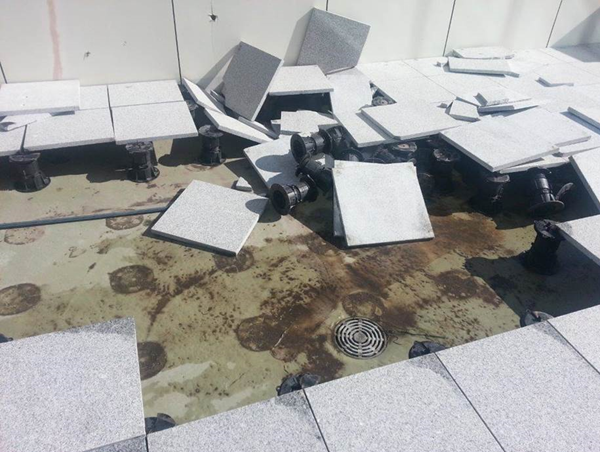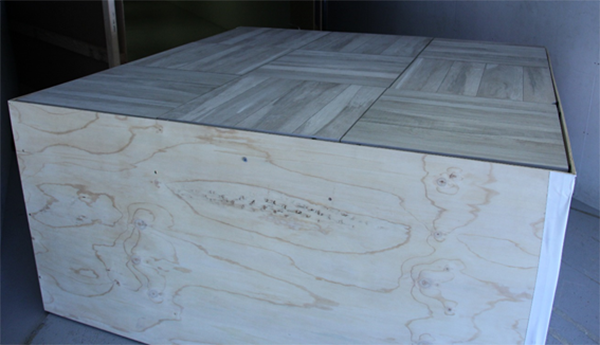Wind Uplift of Paver Pedestal Systems
Posted on 31 January 2017
In recent times, the installation of paver pedestal systems for outdoor areas of building developments has increased in popularity. The noted advantages include, water damage prevention (reduced membrane deterioration) and reduced heat conductivity to the area below. Designers have assumed in the past that the net pressures on these pavers would tend to equalise due to surface pressure being transferred to the cavity below. However, this assumption has been proven to not hold particularly when the pavers are subject to significant accelerated flows around the corners of the base of a tower, where it meets with the podium or conical vertices at the corners of roof top terraces. These wind flow structures can generate a significant net uplift pressure sufficient to overcome the self-weight of some of the largest and heaviest loose-laid pavers. This can result in damage to the pavers from localised movement to larger impacts where such pavers can be uplifted and become wind borne.
The loose-laid pavers are lifted when the net pressure between the top and bottom surface of the paver is sufficiently negative to overcome the gravitation load holding the paver in place. As the vortices pass over the middle of a given paver, the pressure propagates to the cavity underneath via the open edges. However, the transfer of the negative (suction) upper surface pressure to the underside of the paver is incomplete, resulting in an underside surface pressure that is significantly less negative and this leads to the paver lifting.
Windtech Consultants have undertaken full-scale paver lift-off studies for various configurations of loose-laid pedestal paving systems to understand the relationship between the net uplift pressure that causes the pavers to lift and the paver density, dimensions and the depth of the cavity below the pavers.
To be able to provide the client with an understanding of the risk, or expected mean recurrence period for paver lift-off, a wind tunnel study of the subject development is undertaken. The various areas proposed to be covered with the loose-laid pavers are instrumented with pressure sensors to determine the wind pressure acting on the top surface (typically a podium or roof terrace area) for 36 wind directions. The measured pressures acting on these areas are then combined with a directional probability wind climate model for the region and the full-scale measurements for the given paver system to derive a return period (risk) for lift-off of the pavers for the proposed system. This enables the client to have a complete understanding of the problematic areas and/or risks associated with the area, and implement mitigation measures for areas that pose unacceptably high risk, should this be required.
Example of a full-sale test of a pedestal paver system.
Return to Main News Page



